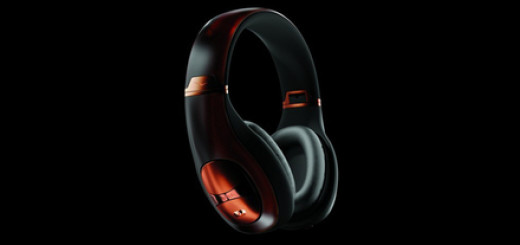A Bold Promise For Computers Found by Looking Backward
In this age of iPhone rumors, ubiquitous Bluetooth earpieces, tablets, e-readers, patent wars and tech stock disasters, it might be nice to take a look at where we’ve been since this “personal computer” thing got started.Let’s look at five key stops along the timeline since 1975, from those project bench days before Bill Gates got the smell of money in his nose.
The Altair 8800 (1975) $395
This is the granddaddy of all personal computers. If you wanted an Altair 8800, you had to build and solder it yourself. Micro Instrumentation Telemetry Systems (MITS) sold calculators and model rocket parts before putting together this kit of parts that you could buy out of Popular Electronics magazine and carefully assemble yourself.
There was no keyboard, no monitor. Once assembled, you did your entries using switches and LEDs on the front panel. Eventually, expansion slots allowed for a keyboard, monitor, printer, storage, etc.
Then two enterprising young men write a programming language called Altair BASIC. They sold it for $500, but you could get it for $75 if you purchased it with the computer, and interface board and 8K of memory. Those two guys soon formed their own company and sold Altair BASIC as their first product. Their names were Bill Gates and Paul Allen. The company was called Micro-Soft.
The Atari 520ST (1985) $799
The 520ST included a keyboard, mouse, monochrome monitor, external floppy drive and 512K of RAM. The OS had to be loaded into RAM from a floppy. Apple had released the Macintosh one year earlier and there was a rivalry between the two companies since both featured a Graphical User Interface. The Atari’s OS was called TOS – Tramiel Operating System.
Atari soon released the 1040ST with a built-in floppy drive and 1MB of RAM. Four years later they released a portable version of the ST line, called the Stacy.
This is a British commercial for the Discovery Pack bundle for the 520ST.
The Apple Macintosh Performa 6200CD (1995) $2300
The Performa had a 75 MHz PowerPC 603 processor, 8 MB of RAM, a 1.0 GB hard drive and a 4X CD-ROM drive in a desktop case. It came with a 15″ Apple color monitor and an external 14.4k modem.
Apple’s marketing campaign for the Performa series showcased much the same things that Apple uses to contrast Macs and PCs today: ease of use right out of the box versus jumping through hoops to get things to work. The commercials were longer and more “informational”, but you can see a foreshadow of the “I’m a Mac/I’m a PC” campaign, even then.
The Apple iBook G4 (2003) $1099
The iBook G4 had a better processor than the previously released G3. It featured a 12-inch monitor, 800MHz processor, a 30GB hard drive, slot-loading DVD-ROM/CD-RW combo drive, and Airport and Bluetooth were optional. These were OSX only.
Apple had marketed the G3 version by touting its media capabilities, video editing, music, etc. all in a portable design. The commercial starred actor Milo Ventimiglia.
The Sony VAIO Y (2010) $769
The VAIO Y was introduced as a more affordable alternative to the VAOI Z. At the sub-$800 price range, it was well-received as within reach of people who wanted a good performer, built well, but did not want to shell out the money for things like a custom machined faceplate on the Z model.
The VAIO Y featured Windows 7, a 1.2GHz processor, a 500GB hard drive, 13,3# wide screen, and all the usual ports, plugs and wireless connectivity that has come to be expected of laptops.
Commercials for the VAIO Y touted its long battery life and light weight, which equals portability.
What’s Next?
As the timeline shows, computers have moved toward being more portable at every step. Making it lighter, stronger, and cheaper is all about stuffing more features into the box. We first made things smaller, but then we decided we wanted bigger screens again. So now the buzzword is “thinner”. But still, we’re retooling the same machine.
As for genuine innovation, one of the best leaps into that avenue is already in our hands: the smartphone. Our computers now go with us and fit in our pockets. That development re-aims lots of other possibilities on the board.
But beyond that development, Intel is launching research in Israel that aims to find out how to make devices that “learn” about the user. They will notice where car keys are left, notice daily routines, view emails, schedules, pictures, etc. – all with the aim of becoming more of a personal assistant to the user.
Google is also already promising that their Google Glasses will be available soon. The idea of portability and interaction with humans takes this all to a whole new level. Could a technology like that be integrated into automobile windshields to help us avoid accidents? What about a voluntary network of Glasses users that scans for missing children using facial recognition software?
The promise of these kinds of computer wonders is upon us. Seeing where we have been and how far we’ve come tells us that we can get to these kinds of futures.

